
BREAKING NEWS ITEMS [2011]
Wednesday, November 9, 2011; By a vote of 58 to 42 percent, Prop. 26 was soundly
defeated yesteday by Mississippi voters. [1] This constitutional amendment would have
stipulated that "legal personhood" begins at conception. Among other implications, this would
have made research on human embryonic stem cells and many common forms of contraception
illegal. Furthermore, IVF would have become impractical if excess deformed embryos (now
persons) were required to be permanently placed in cryogenic suspension in liquid nitrogen
(so-called snowflake babies) that nobody would ever wish to implant in a surrogate
mother's uterus. As a curious implication of the law, opponents have humorously asked, "If a
pregnant woman wanted to go to the movies, would she now have to buy two tickets?" A far as
the supporters of Personhood Amendment are concerned, instead of quietly stealing away in the
night after their ignominious reversal at the polls, they promise to bring this amendment to a vote
in six other states! [2]
_______________________________________
Editorial Op-Ed Opinion Piece written for The New York Times...
In Erik Eckholm's front-page report on Mississippi's Proposition 26 [1], we see that the
opponents of abortion are taking a new tack.
Many Republican candidates for the presidency, including Mitt Romney, tell us that they would
support a constitutional amendment to establish the principle that "legal personhood" begins at
conception, not simply at birth. As a consequence any deliberate interruption in the development
of a fertilized egg post conception (a process that starts with a zygote and leads to a blastocyst)
would constitute murder, and so be declared an illegal act with a punishment appropriate for the
crime. But this would make any pregnancy that resulted in a miscarriage murder. It would make
any therapeutic abortion murder. Moreover, it would make any form of birth control that
prevents implantation in the uterus murder, including the use of an IUD or the birth control pill,
used by most women today for contraception. Furthermore, this is what Mississippi voters will
be deliberating in their Prop. 26 on Tuesday, November 8th.
What is rarely understood by the advocates of this position is that more than 50 percent of all
blastocysts are naturally expelled by a woman's body during her menstrual period for failure to
undergo implantation in the uterus, typically due to aneuploidy or other forms of chromosomal
aberrations, which are biologically commonplace and increase exponentially in incidence with
maternal age. In other words, a potentially pregnant woman would not even be aware that she
was pregnant half the time.
I have published a formal definition of personhood[2] based on Fuzzy Logic, a
mathematical formalism invented by Prof. Emeritus L. A. Zadeh of UC Berkeley in the 1960's.
My mathematical definition establishes the necessary and sufficient conditions for legal
personhood. By this definition, a zygote is not a person. Nor is any preimplantation blastocyst a
person (a blastocyst is a collection of nearly identical, undifferentiated cells). Indeed, being a
person requires having a Central Nervous System (CNS) which a blastocyst obviously doesn't
have in any way, shape, or form. Only a post-implantation developing embryo could have a
central nervous system. Clearly, a zygote is "human life." It is "human" since it contains human
DNA, and it is "life" since it's alive. But I repeat: it is not a person. So, in principle, one could
say that "human life" begins a conception, but not that a "person" begins at conception.
So how could any literate adult who has studied high-school biology make this mistake? There
appears to be an intentional confusion of "potentiality" with "a finished reality" -- confusing an
acorn with an oak tree -- confusing a blue print with an office building. As this is self-evident, I
suspect that there is a hidden agenda for those who deliberately make this error. It is transparent
to me that this agenda is an anti-abortion agenda, and from their point of view any absurd
manipulation of common sense to achieve their goal is fair game, including an insidious misuse
of the English language to remove the clear distinction between "human life" and "legal
personhood."
Very truly yours,
L. Stephen Coles, M.D., Ph.D., OB/GYN, Mathematician, and Lecturer in Gerontology
UCLA Department of Chemistry and Biochemistry
Los Angeles, California
Voice: 310-209-0853
FAX: 310-209-0860
Cell: 310-892-9120
Refs.:
1. Erik Eckholm, "Voting on Conception As the Legal Start of Life: A Push for 'Personhood'
Amendments Represents New Tack in Abortion Fight," The New York Times, pp.
A1,16 (October 26, 2011). Click on the photo above for a link to this story on the
Internet.
2. L. Stephen Coles, "The Ethical Basis for Using Human Embryonic Stem Cells in the
Treatment of Aging," pp. 71-9, Gregory M. Fahy, L. Stephen Coles, Steven B. Harris, and
Michael D. West, Editors, The Future of Aging (Springer, New York; 2010).
__________________________
Refs.:
1. Jacques Berlinerblau, "Why the Mississippi Personhood Amendment Imploded,"
The
Washington Post (November 9, 2011).
2. Personhood USA.

Sunday, November 6, 2011; 1:15 PM PST; Stephen Coles gave a brief update on Supercentenarian instantaneous mortality rates at the "M" Hotel in Las Vegas, NV to the Fall AMMG Conference. These rates do not appear to plateau at any particular age as they do in insects. but continue to rise systematically with age.

Both mice are seven months old. The decrepit old mouse on the left is frail, hunchbacked, and
thin due to muscle atrophy. The mouse on the right has a youthful appearance following
administration of a drug to clear out senescent cells [1].
Wednesday, November 2, 2011; Old mice have been made to appear youthful at the Mayo Clinic in Rochester, MN by a process that clears senescent cells. This is a potentially disruptive technology among a wide raange of anti-aging interventions. Researchers have found (for the first time) that by using a drug to target and destroy senescent cells (p16 [Ink4a] positive surface-marker, non-replicative phenotype), they could essentially freeze certain aspects of the aging process in an adult mammal. Watch the video from The Wall Street Journal [2] and see the Abstract in Nature just below [3].
Abstract:
Advanced age is the main risk factor for most chronic diseases and functional deficits in humans, but the fundamental mechanisms that drive aging remain largely unknown, impeding the development of interventions that might delay or prevent age-related disorders and maximize healthy lifespan. Cellular senescence, which halts the proliferation of damaged or dysfunctional cells, is an important mechanism to constrain the malignant progression of tumor cells1, 2. Senescent cells accumulate in various tissues and organs with aging3 and have been hypothesized to disrupt tissue structure and function because of the components they secrete4, 5. However, whether senescent cells are causally implicated in age-related dysfunction and whether their removal is beneficial has remained unknown. To address these fundamental questions, we made use of a biomarker for senescence, p16Ink4a, to design a novel transgene, INK-ATTAC, for inducible elimination of p16Ink4a-positive senescent cells upon administration of a drug. Here we show that in the BubR1 progeroid mouse background, INK-ATTAC removes p16Ink4a-positive senescent cells upon drug treatment. In tissues - such as adipose tissue, skeletal muscle, and eye - in which p16Ink4a contributes to the acquisition of age-related pathologies, life-long removal of p16Ink4a-expressing cells delayed onset of these phenotypes. Furthermore, late-life clearance attenuated progression of already established age-related disorders. These data indicate that cellular senescence is causally implicated in generating age-related phenotypes and that removal of senescent cells can prevent or delay tissue dysfunction and extend healthspan. [3]
Refs.:
1. Nicholas Wade, The New York Times (November 2, 2011).
2. The Wall Street Journal, pp. A1, 2 (November 3, 2011).
3. Darren J. Baker, Tobias Wijshake, Tamar Tchkonia, Nathan K. LeBrasseur, Bennett G.
Childs, Bart van de Sluis, James L. Kirkland, and Jan M. van Deursen, Mayo Clinic in
Minnesota, "Clearance of p16Ink4a-Positive Senescent Cells Delays Aging-Associated
Disorders," Nature (November 3, 2011); DOI: 10.1038/nature10600.
October 31, 2011; Click on the photo above for a video interview with Prof. Gazzaniga of UC Santa Barbara. Dr. Gazzaniga served as a member of the Bioethics Council during President George W. Bush's Administration.

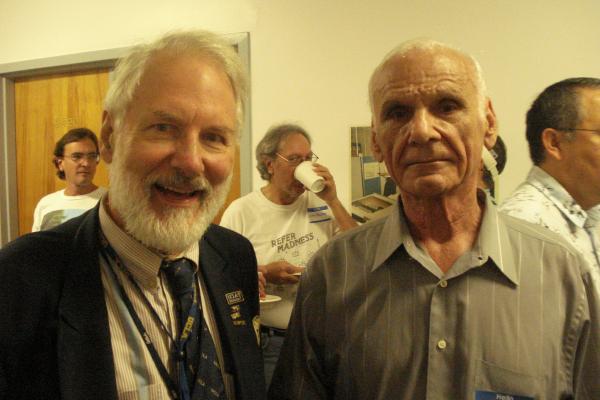
October 29, 2011; 1:00 PM PDT; Room 3420 Boelter Hall at UCLA; On October 29, 1969, Prof.
Leonard Kleinrock was part of the team that passed the first message on the ARPA Net (the
predecessor of today's Internet)between UCLA and SRI International in Menlo Park, CA, where
I was working in the SRI AI Center at the time. The first photo above is with an IMP (Interface
Message Processor), an entire computer needed to connect a Model-33 Teletype to the Network.
The second photo shows Dr. Larry Roberts who funded the work at ARPA in the Pentagon at that
time. The ARPA Net was a network of computer scientists. There was no SPAM, nor computer
viruses; indeed, there wasn't any commercial traffic whatsoever. It was a purely academic,
collegial communications media in which I received maybe 20 messages a day from Monday to
Friday, instead of 200 messages a day seven-days-a-week.
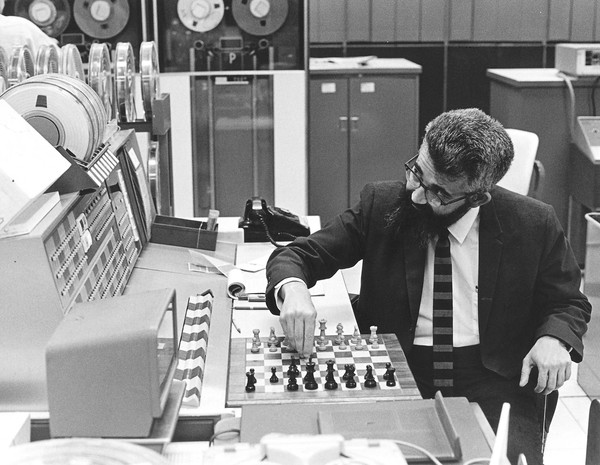
John McCarthy, who pioneered computer chess, helps to play a match against a Russian program
in 1966.
October 26, 2011; There have been three complete Obituaries of Professor McCarthy in the
newspaper media [1,2,3, 4], but what follows is my personal recollection...
I first met John at MIT in November 1961 when he was the office-mate of Marvin Minsky and he
volunteered to read and edit one of my articles from RPI while I waited. I met him again in
Edinburgh, SCOTLAND in August 1965. He never liked the phrase "Artificial Intelligence" very
much, even though he coined the term for the Dartmouth Conference. He offered me a job at
Stanford when I started teaching there in 1967. I met him in Dubrovnik, YUGOSLAVIA during
the Summer of 1970 where he was a guest lecturer. I met him in Tiblisi, USSR in the Summer of
1975. I have been at his home at Stanford many times. I met his second wife, Vera Watson, when
she worked for IBM in San Jose, where I had a Summer job with Dr. Ted Codd, IBM Fellow, in
1977. I always attended his lectures whenever I could, especially on "Common Sense Reasoning"
or "Modal Logics." He loved puzzles like "The Monkey and Bananas Problem" and "The
Mutilated Checkerboard/Domino-Covering" Puzzle. He invented the Situation Calculus,
which I used in teaching at USC and at UCLA for many years. He invented the technique
of "Recursive Induction" for proving the correctness of algorithms, like sorting a random list of
items into alphabetical order (using the Lambda Calculus). He read A. A. Markov's work in
Russian, which he spoke fluently. I regularly chronicled his computer chess games in the
SIGART Newsletter, for which I served as Editor-in-Chief. Barbara Hubermann did a
Ph.D. Thesis on Chess Endgames under his supervision. The Robotics Lab at SAIL was famous
for the Victor Scheinmann Arm manipulators, inserting a pin in a hinge for the first time and the
Stanford Cart that autonomously traveled around a football field at Stanford. Dr. Raj Reddi did
his "Hear/Here" Ph.D. thesis work at Stanford on Speech Understanding in the mid 1960's.
I last met John three years ago in San Diego in March of 2008, where I diagnosed Acute
Essential Tremor (not Parkinson's Disease). See a photo of us together in the News
Section on this GRG.ORG website for the date of March 5, 2008,
where I am holding up an original copy of Automata Studies that he co-edited in 1956
with Claude Shannon (the Father of Information Theory) [an Orange softcover book]. He was
very interested in Supercentenarians who were also mathematicians. We exchanged several
E-mails on this topic since then.
When it came to Mathematical Logic and AI, John was my mentor and role model for the past five decades. With his passing, along with Herbert Simon and Allen Newell of Carnegie and Art Samuel of IBM, only Prof. Marvin Minsky of MIT remains from the original 1956 co- founders of AI to carry the torch into the future.
- - L. Stephen Coles
Refs:
1. John Markoff, "John McCarthy, 84, Dies: Computer Design Pioneer," The New York
Times,
p. A26 (October 26, 2011).
2. Stephen Miller, "Computer Scientist Coined 'Artificial Intelligence'," The Wall Street
Journal, pp. A1, 6 (October 26, 2011).
3. Elaine Woo,
The Los Angles Times p. AA5 (October 28, 2011).
4. Keith Devlin, The Math Guy at Stanford University, "Remembering The Father Of Artificial
Intelligence,"
NPR Radio (Saturday, October 29, 2011; 9:40 AM PDT; TRT = ~3:00 min.).
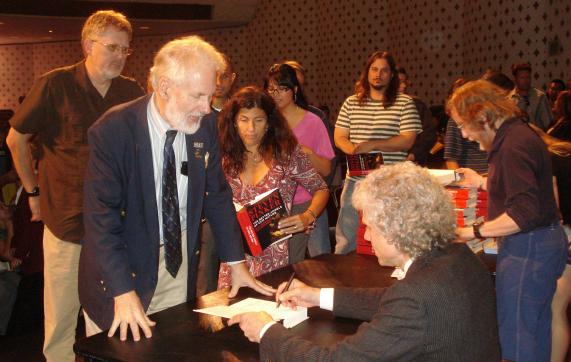
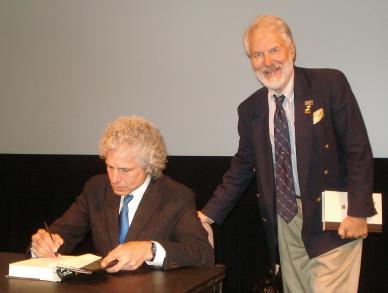

Sunday, October 23, 2011; 2:00 PM; Prof. Steven Pinker, Ph.D., Clinical Psychologist and Linguist from Harvard University, gave a talk at the Beckman Auditorium at CalTech in Pasadena, CA to an audience to over 200 persons after which he autographed copies of his new book The Better Angels of Our Nature: Why Violence Has Declined (Viking Press, New York; 2011; 802 pages).
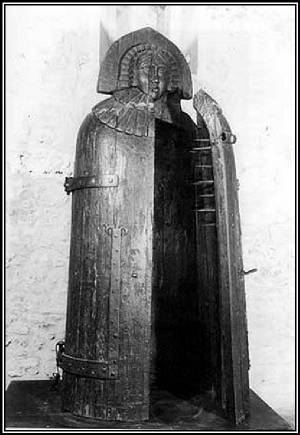
Click on the image of the Iron Maiden to see a brief history of medieval torture methods that
Prof. Pinker described to illustrate how our society has become more civilized, as our culture has
become more literate and increasingly educated to the idea of human and animal rights.
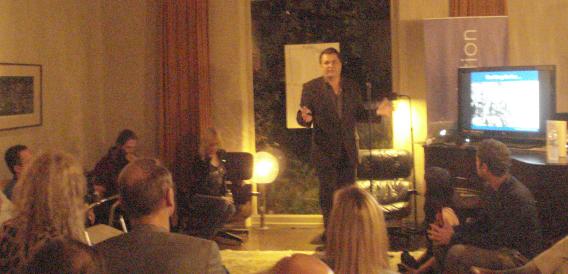



Wednesday, October 5, 2011; 7:00 PM PDT; Dr. Aubrey de Grey, CSO, reported that the SENS Foundation has now established a collaboration with Prof. Anthony Atala, M.D. of Wake Forest University in North Carolina. Actor Edward James Almos of the TV-Series Battlestar Galactica is a strong supporter of SENS and spoke to the Group. Author Sonis Arrison donated 100 copies of her new book 100 Plus: How the Coming Age of Longevity Will Change Everything, from Careers and Relationships to Family and Faith.
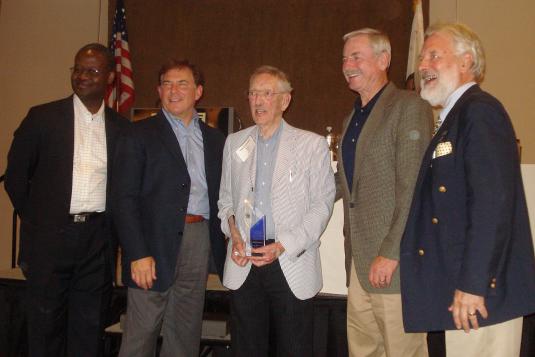
Prof. Okezie I Aruoma, Ph.D., D.Sc., Bernie Landes, Bruce N. Ames, Ph.D., John Repine, M.D.,
and L. Stephen Coles, M.D., Ph.D.
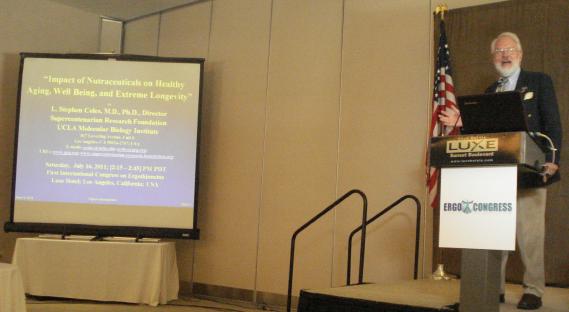 "The Impact of Nutraceuticals on Healthy Aging, Well Being, and Extreme Longevity"
"The Impact of Nutraceuticals on Healthy Aging, Well Being, and Extreme Longevity"
July 15-17, 2011; The Luxe Hotel on Sunset Blvd. in West Los Angeles, CA - - Oxis International's Debut Gathering of Leading Researchers in Anti-Aging Medicine Discuss the Merits of an Unparalleled Antioxidant, Ergothioneine . An impressive "who's who" in anti-aging medicine and research from around the world gathered for the first time this weekend to discuss the myriad benefits of L-Ergothioneine (Ergo), a newly rediscovered antioxidant that is 6,000 times more potent than Vitamin E. Oxis International (OXIS.OB) provided an educational grant in support of the First International Congress on Ergothioneine, which featured lively discussion and sharing of information on oxidative stress, healthy aging, and the management and prevention of chronic diseases. Attendees agreed that the key "takeaway lesson" from the conference was that Ergo may well be a previously-unidentified nutrient essential to human health, a unique compound that not only has extraordinary antioxidant activity but also has been shown to enhance and extend the potency of other antioxidants.
Experts Have Embraced the Potential of This New Discovery:
Dr. Okezie Aruoma, M.B.A., Ph.D., D.Sc., Touro College of Pharmacy, New York and President
of Oxis Advisory Board, says, "The uniqueness of Ergo in the human body may not only reside
in its ability to protect organs against age-dependent degeneration due to chronic inflammation,
but also increase the body's availability of Glutathione, a first-line antioxidant defense in vivo,
while conserving Vitamin E, which is a critical process in detoxification."
Dr. L. Stephen Coles, M.D., Ph.D., UCLA Department of Chemistry and Biochemistry,
member of Oxis' "Blue Ribbon" Science Advisory Board, says that the potential for Ergo's
impact on human health is exciting. "This small amino acid (a thiourea derivative of
histidine) is a critical molecule in many different biochemical pathways within the cell. It
serves to protect the tissues and quench dangerous free radicals. Furthermore, the human
body has a specific gene that synthesizes a carrier protein whose role is to enable Ergo to be
transported into the cells."
Dr. Bruce Ames, Ph.D., Children's Hospital, Oakland Research Institute, member of the
National Academy of Sciences and inventor of the "Ames Test" states, "Ergo is an old
compound that new research is suggesting may be an unappreciated vitamin. It is
specifically transported into the body and humans do not synthesize it." Dr. Ames was
presented with a special "Achievement Award" at the conference, in recognition of a lifetime
of extraordinary achievements in antioxidants and anti-aging research.
Dr. John Repine, M.D., Webb Waring Institute, University of Colorado, also a member of Oxis'
Advisory Board, was awarded a $1.34 million grant from the US Department of Defense that is,
in part, providing funding to continue his research efforts on the potential use of Ergo as a
therapeutic intervention for Acute Lung Injury (ALI) and Acute Respiratory Distress Syndrome
(ARDS), severe lung diseases that can be fatal in combat veterans and other trauma patients.
Originally discovered by French chemist Charles Tanret in 1909, Ergo has lain dormant for over 100 years until very recently. Leading scientists now believe that Ergo is a nutrient essential to human life, but, unlike other nutrients, it cannot be made by the human body nor even by plants. Ergo is a sulfur-containing amino acid with a specific structure naturally produced by certain microorganisms in the soil; it can also be found in very small quantities in certain exotic mushrooms, oat bran, beans, and a few other foods. Furthermore, there is a gene (SLC22A4 on Chromosome 5) that synthesizes a carrier protein (ETT) specifically dedicated to Ergo transport. Therefore, we suspect that Ergo must be important; otherwise, why would Nature have gone to all the trouble to create a unique protein for its transport.
Oxis International, a leading biotechnology company, owns the patent to manufacture pure L-Ergothioneine. Oxis has now begun to market the ingredient in consumer products, combining Ergo with other compounds to create products for joint health and aging support among others. "L-ergothioneine may be the most important nutritional breakthrough in years," says Bernie Landes, President of Oxis International. "It is perhaps the most powerful and effective antioxidant ever, with unparalleled potential benefits for cognitive function, eye health, immune modulation, lung health, reproductive health, skin health, and overall wellness at all stages of the aging process."
About OXIS International, Inc.
OXIS International, Inc. is a long-established, but recently revitalized biotechnology Company developing multiple proprietary, natural substance-based products focused on oxidative stress and inflammation, which are associated with the damaging effects of free radicals and Reactive Oxygen Species (ROS). The Company's consumer product portfolio is quickly expanding to include dietary supplements, functional foods and beverages, skin-care and other personal-care products, as well as veterinary health-care products. Specifically, Oxis is emphasizing the unique properties of L-Ergothioneine (Ergo), a highly potent, patent-protected, and versatile antioxidant. The Company recently signed a strategic financing agreement with its primary product development and manufacturing partner, Gemini Pharmaceuticals, launched its first product, ErgoFlex, for joint pain relief and overall joint health, and announced a joint venture with engage:BDR for a global leader in on-line sales and marketing.
For more information, please visit www.oxis.com
Ref.: 4 Traders

June 30, 2011, 1:30 PM PDT; Dr. Coles presented a discussion on the "History of Robotics"
from [1965-75], including work done at SRI [Shakey/General Factotum],
Stanford, MIT, Draper Lab, and UC Berkeley [Jason], at the 7th Annual Robotics
Science and Systems (RSS) Conference held this year at the USC main campus in Los
Angeles, CA from June 27th to July 1st. He showed a short video clip (TRT = 1:02 min.) from a
History Channel Cable-TV Documentary on "Modern Marvels: Foiled Inventions" that
aired on June 15, 2011 (a repeat program, which had originally aired in 2003), demonstrating two
anthropomorphic home robots from 1940-era world fairs that allegedly had a wide repertoire of
behaviors (smoking cigarettes, directing automobile traffic at an intersection, walking a dog,
soliciting the audience for a girl friend, and so on). 70 years later these capabilities are still
decades away.
Coles was introduced by Prof. Matt Mason, Ph.D., Director of the Robotics Institute at Carnegie Mellon University in Pittsburgh, PA. Coincidentally, Dr. Mason was a student in an Algol W undergraduate Computer Programming course that Dr. Coles taught at Stanford University back in 1969 when Matt was still a high-school student and audited the course with permission. They had not seen each other for over 40 years! Their meeting again would not have happened were it not for the ease with which one can locate people on the Internet nowadays! One can never be sure what one's students will do in the future due to your own influence as a teacher.
The JPL Mars Rovers (Spirit [now shut down] and Opportunity [still operational] deserved special mention, since they operated in a hostile environment (high winds, dust storms, and extreme temperature fluctuations) for over seven years, when their expected lifespan was only 90 days! The automated car (Google), Roomba vacuum cleaners (~$250) from iRobot, and the Surgical da Vinci Teleoperator were also mentioned. The most conspicuous recent failure was at the Fukushima Nuclear Power Plant, in which no Japanese robot was able to perform the task of observing and measuring radiation within the plant, despite the large Japanese footprint within the industry as a whole.
It was decided att the end of the lecture that the Conference organizers should appoint a volunteer curator for a single collection of historical video clips from the early days of robotics that are Internet accessible and in chronological order.
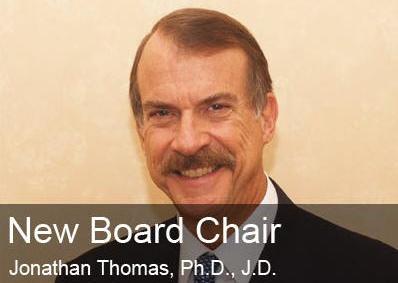
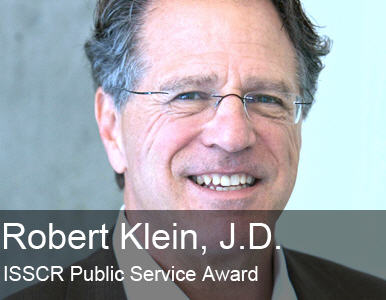
June 22, 2011; At today's meeting, the Governing Board elected Dr. Jonathan Thomas to a
six-year term as the new CIRM Chairman. Thomas replaces outgoing chair Robert Klein who has
served in the position since the agency's inception in 2004. Thomas was previously with
Saybrook Capital, an investment banking and private equity firm, which he co-founded in
1990. While with Saybrook, Thomas assisted with an early round of financing for Advanced
Cell Technology, which recently received FDA approval for two embryonic stem cell-based
clinical trials. Click on the first photo for more details.
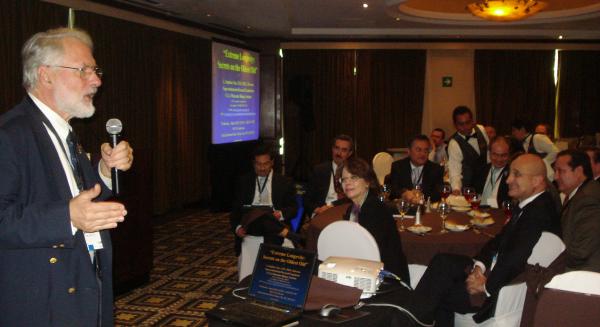


Wednesday, June 8, 2011; [12:15 - 1:45] PM CDT; The OECD (Organization of Economic
Cooperation and Development [based in Paris, FRANCE]) held a conference at the Hotel
Meliá México Reforma in Mexico City for ~130 international delegates.
Click on the first photo for the OPEC Conference Agenda. Click for Dr. Coles's PowerPoint luncheon presentation, "Extreme Longevity: Secrets of the Oldest Old". (Don't worry if it takes a few seconds to load all 63 slides.)
The second photo is of a stone statue called a Chac Mool at the Museum of the Aztec Major Temple (Templo Mayor of Tenochtitlan) near the Central Cathedral of Mexico City. The third photo is from the pyramid of the Mayan Capital of Chichen Itza in the Yucatán. These statues appear in both Aztec and Mayan cultures, even though they didn't mingle directly, as this god derives originally from a precursor Toltec Civilization that was common to many subsequent Pre-Columbian cultures. Click on the second photo for more details on the cruel purpose of the statue of the Chac Mool in early Mexican History. The bowl that the reclining warrior is holding over his stomach was used to hold the beating hearts of live sacrificial victims; we suspect that numerous enemy victims had their skin flailed in one large religious ceremony, while their decapitated, cardiectomized bodies were then rolled down the steps of the pyramid for the enjoyment of an assembled crowd at the base.

Wednesday, May 25, 2011; 4:00 PM; One of the top ten gerontologists in the world visits UCLA
to attend the lecture of his Daughter, Prof. Kelsey C. Martin, M.D., Ph.D. of the UCLA
Department of Biological Chemistry and Psychiatry and Biobehavioral Sciences, who spoke to
the Science Faculty Research Colloquium Series on "Memories that Last: Genes, Neurons, and
Synapses," at CNSI Auditorium.
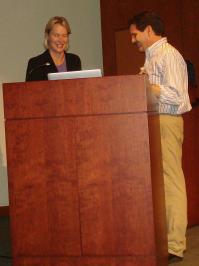
Wednesday, May 25, 2011; Noon. Prof. Frances Arnold of CalTech's Chemical Engineering
Department gave a talk on "Design by Evolution: Engineering Biology in the 21st Century" in the
NRB Auditorium to a full audience. She is a member of both the National Academy of Sciences
and the National Academy of Engineering. Artificial amino acids can be used in addition to the
20 conventional types that will have different enzymatic properties and rates of reaction. Being
able to do two or even three simultaneous substitutions can lead to accelerated evolution.
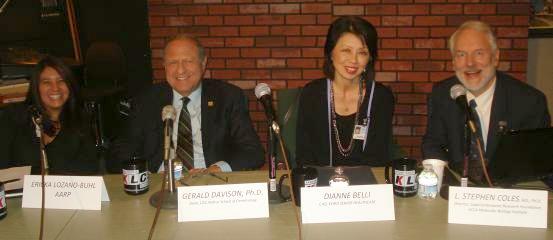
Thursday, May 19, 2011; 7:30 PM; AARP sponsored a special showing at the Public Televison
KLCS-TV studios in down town Los Angeles of the newly-released one-hour
documentary film Over 90 and Loving It to an audience of over 35 persons. Following
the showing, a panel discussion, moderated by Ms. Toni Guinyard, an Emmy-award winning
journalist, featured from L to R: Ericka Lozano of AARP, Dean Gerald C. Davison, Ph.D.
(William and Sylvia Kugel Professor of Gerontology and Psychology) of the Leonard Davis
School and Ethyl Percy Andrus Gerontology Center at USC, Dianne Kujubu Belli, Chief
Administrative Officer of the Keiro Senior Health Care Center, and Dr. L. Stephen Coles, M.D.,
Ph.D. of UCLA's Molecular Biology Institute. In response to the documentary's Tenth Step to
Aging Gracefully and Leading a Fulfilling Life 10. "Don't be afraid of death. Think of it as it is -
- Something very natural and inevitable," Dean Davison quoted Director Woody Allen, "I'm not
afraid to die, I just don't want to be there when it happens!" All those who made it past 90 in the
film had an active sense of humor.
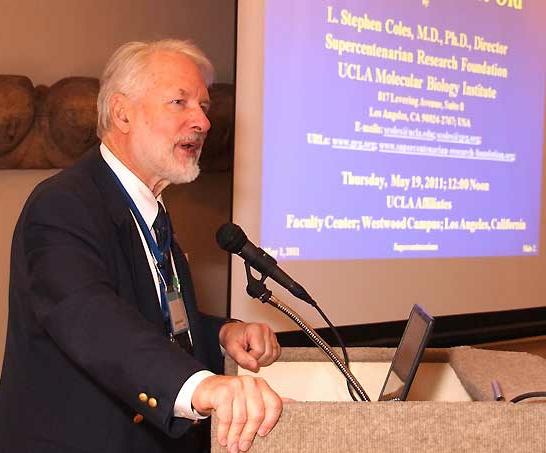
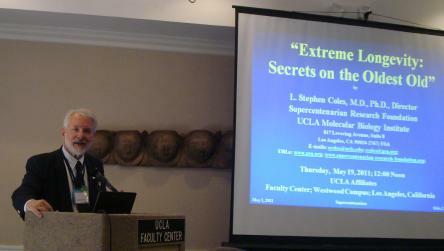
Thursday, May 19, 2011; Noon; Prof. L. Stephen Coles was the keynote speaker at the monthly
luncheon meeting of The UCLA Affiliates at the Faculty Center. About 40 attendees heard the
news that Guinness World Records has designated a Brazilian woman as the new title
holder for the World's Oldest Person. [1]
Ref.: The Los Angeles Times p. A6 (May 19, 2011).
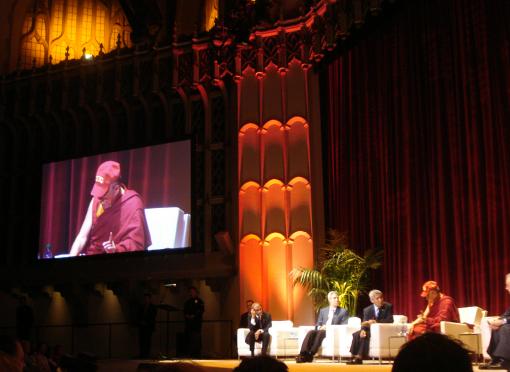
May 3, 2011; 2:00 PM; His Holiness the 14th Dalai Lama of Tibet spoke on "Secular Ethics:
Origins, Elements, and Function in Society" to a packed Bovard Auditorium on the USC Main
Campus in downtown Los Angeles. He spoken on kinship, sacredness, fairness, dignity, respect,
liberty, loyalty, and compassion [1]. So why does the Chinese Government threaten him?
Politics! They want to appoint there own Governor reporting directly to Beijing, given that they
consider Tibet to be a province of China and not an independent country. (Sigh!)
Sharing in a Panel Discussion were the following: Prof. Antonio Damasio, Ph.D., Neuroscientist; James Doty, Chairman of the Dalai Lama Foundation, Prof. Jonathan Haidt, Psychologist from Virginia, Pico Iyer, author, Dr. Geshe Thupten Jinpa, English Translator with a Ph.D. in Religious Studies from Cambridge UK; The Venerable Tenzin Priyadrshi with graduate degrees from Harvard; Varun Soni, Dean of Religious Sudies at USC; Prof. Gideon Yaffee, Philosophy and Law at USC; Prof. Duncan Ryuken Williams, Japanese Buddhism at USC and UC Berkeley. The security for this event was extraordinary for a university seminar, including local USC campus police, fully-armed Los Angeles City/County police, State of California Highway Patrol, and Federal US State-Department plain-clothes officers (of both genders), in addition to traditionally-attired Tibetan Body Guards (monks). The event was translated into sign language for the deaf. The Dalai Lama took it all in stride, appeared to ignore all the security, and displayed a wonderful sense of humor, despite his recent surgery that precludeded his participation in a similar event scheduled for the day before at UCLA.
Ref.: 1. Mitchell Landsberg, "Dalai Lama Speaks on Bin Laden Assassination," The Los Angeles Times, pp. AA1,3 (May 4, 2011).
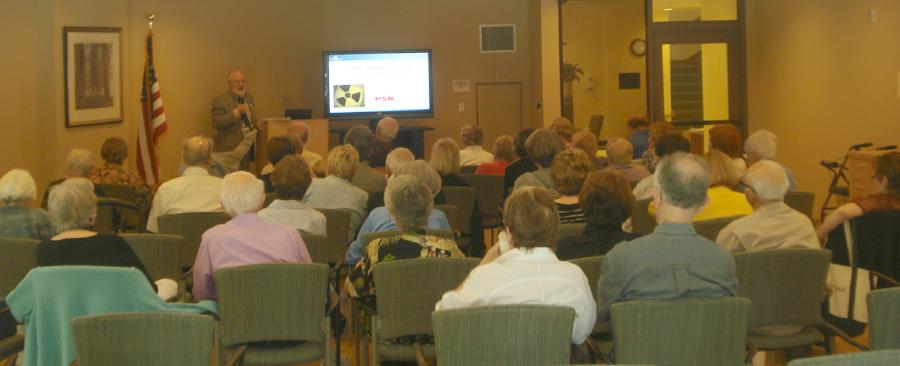
Sunday, April 17, 2011; [2-3] PM PDT; Dr. L. Stephen Coles lectured to a Southern California
Political Action Group on behalf of Physicians for Social Responsibility (PSR) on the
implications for nuclear power in the USA, following the catastrophic accident at the Fukushima
Daiichi Nuclear Plant(s) in Northeastern Japan. This accident, following and 8.9 - - > 9.0
magnitude earthquake (on Friday, March 11th at 2:46 PM JST) under the ocean and a follow-on
[7 - 10] meter-high Tsunami (going up to three miles inland) was originally called a Level-5
Nuclear Disaster by the INES but was subsequently elevated to a Level-7, the highest possible,
the same as Chernobyl. This was a natural disaster far in excess of the design specifications for
this 1970- era design that was unique only by the fact that there were six similar plants situated in
the same geographical location in such close proximity that a failure of one would impact a
failure in another. More than 13,000 people are now declared dead or missing. Four of the six
1970's Fukushima Daiichi plants were severely damaged (1-4). Other Japanese nuclear plants
were shut down. Electrical power was lost and the damaged plants were evacuated to protect the
workers; cooling pumps failed after eight hours; cooling ponds began to heat up and turned to
steam; spent fuel rods melted. Tritium radiation was released into the atmosphere; contaminated
sea water was released into the ocean, impacting the local fishing industry. Iodine-131 has a
half-life of only eight days, while isotopes of Strontium-90 and Cesium-137 have long half lives
on the order of decades (29 years and 30 years, respectively). Plutonium is on the order of 24,
000 years. Some nuclear workers received an exposure in one hour equivalent of 40 years worth
of background radiation (3.95 mSv per year)(For reference, 1 Severt = 100 rem; 1 Gray = 100
Rad; and 1 Curie = 37 GigaBecquerels).
No one could argue that preparation for an accident or the follow-on response was inadequate because the accident occurred in a third-world country. Japan is one of the most technologically-advanced countries in the world. Other than Three-Mile Island in Pennsylvania (no fatalities) and Chernobyl (6,000 thyroid cancers in a population of 5 million that didn't generally use iodized salt on their food, so they were more vulnerable), the US doesn't have much experience with radiation sickness in the real world. We know that in lab mice radiation causes severe chromosomal damage (double-strand breaks in DNA). In 1945, after Hiroshima/Nagasaki in which two ~10 KT weapons exploded in the atmosphere, there was a 11 percent increase in childhood leukemias and a 45 percent increase in solid cancers over a 60 year period. Prediction about what to do if there were a radiological accident is hard to assess, since the government obviously doesn't want its citizens to get unduly upset by making them rehearse a true evacuation plan.
The Japanese government has sought to evacuate ~200,000 people living within 20 Km (12 miles) of the reactors and is also reported to be distributing potassium iodine pills to reduce the risk of thyroid cancer. This 12 mile radius has subsequently been increased to 19 miles. The US has recommended 50 miles, as a safer bet. In a desperate effort to prevent a nuclear meltdown, Tepco (Tokyo Electric Power Company), the reactor operator, has flooded at least two reactors with seawater (maybe three). Tepco hopes that they will be able to do a "cold shutdown" in about nine months. The economic consequences could be severe: The Bank of Japan has offered a combined 15 trillion yen (US$183 Billion).
A Bedford MA-based robotics company (iRobot Corp.), which makes the Roomba vacuum-cleaning robot, has loaned Tepco two Packbot robots to measure radiation and oxygen levels, as well as the temperatures in the buildings. This is clearly an embarrassment for Japanese industry in that the they have long ago surpassed the US in the last forty years in their robotics manufacturing skills. Why did they wait so long under these panic circumstances to then rely on an American company?
Who knows when solar panels will be cheap enough to replace oil, coal, gas, and nuclear as a source of renewable, sustainable energy? Half of all cars need to be Li-battery electric by a certain date (?) in order to reduce the CO2 load in the atmosphere to mitigate the ecological consequences of global warming for the sake of our coast lines and for agriculture.. Our engineering colleagues at CalTech in Pasadena are working on the economics of solar panel technology at a furious pace, but will it be in time?. On Tuesday, April 12th, Gov. Brown of the State of California signed a law mandating that 1/3 of state energy supplies shall come from green, renewable sources by the year 2020 - - a good step.
At some point, we will discover the error of our ways in creating a completely artificial Saudi Arabian economic powerhouse that buys our military aircraft in exchange for oil. Governmental chaos in Libya is a small example of this short sightedness of relying on foreign oil from the Middle East or off-shore drilling in the gulf by the likes of BP to operate our cars.
We need solar and wind power to take on the bulk of the energy demand in this country, no matter what the present cost compared with seemingly cheap coal and gas. The problem is one of short-sighted calculations based on econometric models that focus on the middle of the life- history of the expenditure. There is always a beginning- and ending-cost associated with any activity, not just an operational middle. For example, beginning-costs: By allowing Africa to dig-up our yellow-cake and concentrate uranium to (close to) weapons grade as reactor fuel placed in tall Titanium Rods, in non-US locations, we don't hear about the deaths due to radon exposure by the unfortunate miners who do the digging, and so we forget about these costs. We import 92 percent of our Uranium (16 metric tons per year) from abroad, including from Russia, Kazakhstan, and Uzbekistan. Ending-costs: By storing our spent fuel on-site in giant ponds at the reactors themselves that are then glassified and stored in metal barrels, we don't factor in the cost of not finding a suitable Yucca Mountain site to store our continuously piling-up long-term waste ("MIMBY [Not In My Back Yard]," said Reno, NV). There may not be any place on Earth that is both safe (in terms of not contaminating the ground water) and secure (from terrorists seeking to construct dirty bombs) where this material can be stored for millennia. These economic externalities will come home to haunt us some day in the future.
Forgetting about the beginning and/or the end of a story and focusing only on the middle, reminds us of declaring war against a foreign government. The President may base his decision on the Pentagon's assessment of what it will cost taxpayers in next year's budget. It overlooks the implications of treating veterans with PTSD or amputees in VA Hospitals over many decades, if the war is not over instantly and especially if the costs can be hidden in supplemental appropriations stolen from trust funds. (Where were the Tea Party folks five yeas ago when we needed them? We are now engaged in fighting 2-½ wars whose final costs have never been properly calculated.) Someone else is going to pay these costs, such as our grandchildren, who will be suck with the bill when the people making the short-term decisions - - and who only have to worry about the next election - - are long since gone and only have to worry about their Presidential Libraries, not the consequences of their decisions.
To conclude, I wrote a brief Editorial the Saturday after the Japanese Earthquake and Tsunami (March 12, 2011; 10:43 PM) to our LA-GRG Discussion Group (about 250 people worldwide) entitled "Nuclear Power Failure in Japan Affects the Nuclear Industry Worldwide," in which I accused the Japanese Government of dissembling regarding the gravity of the failure of the plants and the potential for a meltdown of their containment vessels." I received a number of messages from members who were pro the nuclear-power industry charging me with being a fear monger that I had to answer as best I could. But in retrospect, my Editorial was prescient. Over the coming weeks, those who complained most loudly "pitched their tents and silently slipped away in the night." As I said, the next thing we need to do is "to make solar energy cheap enough to obviate the need for nuclear energy anywhere in the world."

Stephen Coles at the rehearsal on Sunday, March 27th at the AXA Headquarters in Paris.
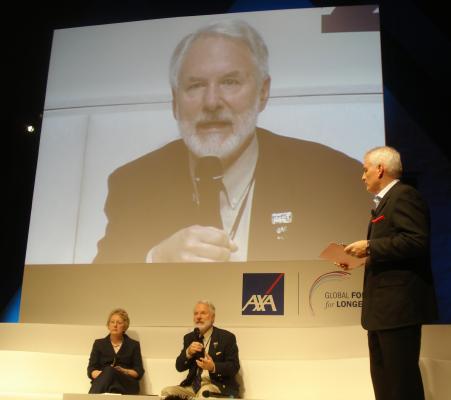
Profs. Carol Jagger and Stephen Coles, with Moderator, Bruno Giussani
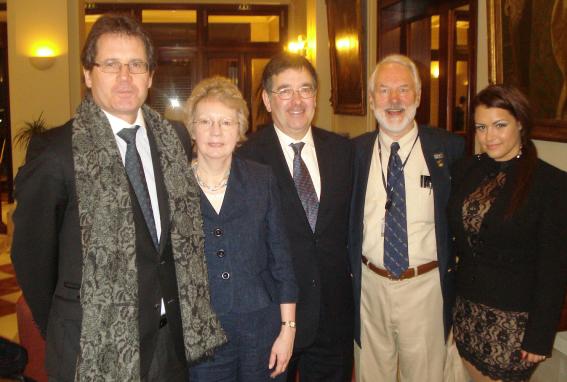
Drs. Robine, Jagger, Kirkwood, Coles, and Natalie Coles
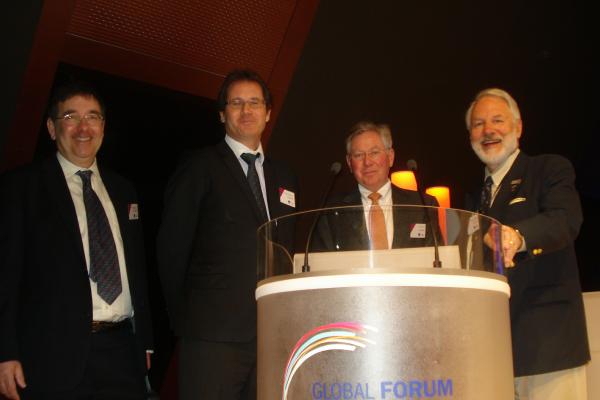
Drs. Thomas Kirkwood of the Newcastle; UK, Jean-Marie Robine of Montpellier;
FRANCE, James W, Vaupel of
Rostock; GERMANY, and Stephen Coles of UCLA, Los Angeles; USA.
March 28, 2011; Paris, FRANCE; The AXA Insurance Company sponsored an all-day
Conference on Socio/Economic Implications of Increasing Longevity throughout the world. In
particular, the Global Forum focused on the paradox of increasing average life
expectancy starting at age 65 vs. the decreasing age of retirement in many of the developed
countries of the world, including China, Japan, South Korea, Europe, Canada, and the USA.
These divergent trends are clearly unsustainable. If annual Social Security payments are indexed
to the rate of inflation in the USA, why shouldn't the age of retirement be indexed to remaining
years of healthy life expectancy and held constant at five years as it was originally designed in
Germany. In fact, the first social security law was enacted in Germany by Prince Otto von
Bismarck (the "Iron Chancellor" under Kaiser Wilhelm, II) in 1889 when those retiring at 65
had only a five-year life expectation (on average) and most workers died before they could
retire.
Two conclusions follow from the projected demographic and financial data: (1) Early retirement based on a government-funded pension or social security should be prohibited; and (2) Retirement ages should be gradually increased by at least five years over the next two decades or else these trust funds will become exhausted and the implied "social contract" between the younger and the older generations will be broken with potentially grave consequences. The solvency of health insurance and retirement trust funds were predicated on assumptions made back in the early 1960's. Fifty years later, these assumptions have now proven to be false. Given current trends, the bankruptcy of our trust funds is inevitable in the not too distant future. As much as wars, the consequences for that failure could be catastrophic for all our collective societies.
On the other hand, by keeping the more mature members of our economy employed while they are still healthy represents an important opportunity to increase the total wealth of our global societies. It is well known that experienced workers have greater productivity per capita per year than newcomers despite the fact that their collective salaries may be higher.
Nevertheless, as it stands now, the moving train is positioned to fall off a cliff in the next 25 to 30 years. Hopefully, the challenge of educating the public and our political leaders will occur in time to avoid bloody demonstrations or political confrontations in the streets of our major cities when the retiring generation awakens to discover that our collective governments have insufficient funds remaining to sustain them in the manner that they were promised.
Click on the top photo above for a complete description of the agenda, speakers, and the overall program, as well as a number of video clips by the principals in both French (with English subtitles) and English (with French subtitles).
It was a privilege for the GRG to be associated with this global conference and the far-reaching vision exhibited by Mon. Henri de Castries, Chairman and CEO of AXA, who spared no expense to make this conference successful.
June 25, 2011; An artfully-edited video clip with time-lapse photography made at the time of the AXA conference has now been posted to the Internet with all the keynote speakers putting in a sound bite with subtitles in French and music. Click on the link to view this short clip. (TRT = 1:53 min.)
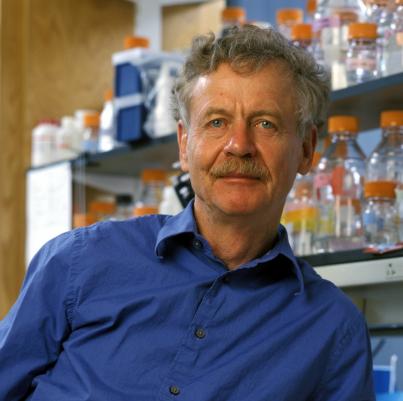
Friday, March 11, 2011; Noon PST; Prof. Rudolf Jaenisch of the MIT Whitehead Institute for
Biomedical Research in Cambridge, MA presented a cutting-edge lecture entitled "ES Cells,
iPSC's, and the Promise of Personalized Medicine." He end his talk to a packed lecture hall with
ambitious plans to cure various forms of inherited anemias (Sickle Cell, Thalasemias, etc.) using
the Sangamo BioSciences, Inc. (Richmond, CA) zinc-finger genetic-engineering technique that
UCLA is also working on in collaboration with CalTech.
Jaenisch was awarded the Max Delbrck Medal for his research on epigenetic mechanisms of gene regulation. If dysfunctional, these play a vital role in development and can lead to disease. The study of these mechanisms is especially significant with respect to embryonic stem- cell research and therapeutic cloning. In his award lecture Nuclear Cloning, Embryonic Stem Cells, and Cell Therapy: Promise, Problems, Reality held on December 1, 2006 in Berlin - Buch Professor Jaenisch referred to the recommendations called for by the German Research Foundation (DFG) two weeks previously, which included revoking the cutoff date for stem cell lines used in research. He described the recommendations as very reasonable and said that, as a researcher, one would wish that politicians would read them and try to understand the issues.

February 18, 2011; 8:30 AM - 5:15 PM; A one-day stem cell conference at UCLA entitled,
"Basic Biology to Translational Medicine," included the following speakers: Juan Carlos Izpisua
Belmonte, Ph.D. of the Salk Institute; Mickie Bhatia, Ph.D. of McMaster University in Canada;
Helen M. Blau, Ph.D. of Stanford University; Kenneth R. Chien, M.D., Ph.D. of Harvard
University; Amander Clark, Ph.D. of UCLA; Dennis Clegg of UCSB, Sheng Ding, Ph.D. of
Scripps in San Diego; Shin-Ichi Nishikawa, M.D., Ph.D. of Japan; and Michael Teitell, M.D.,
Ph.D. of UCLA.
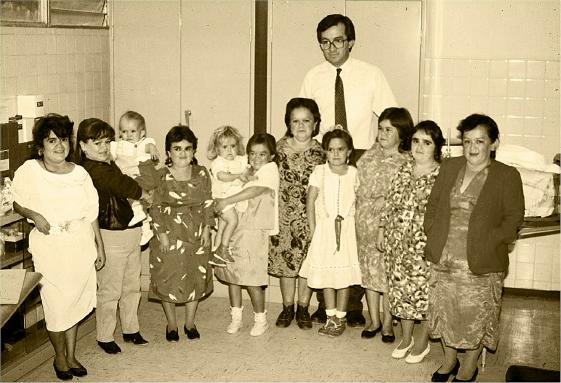
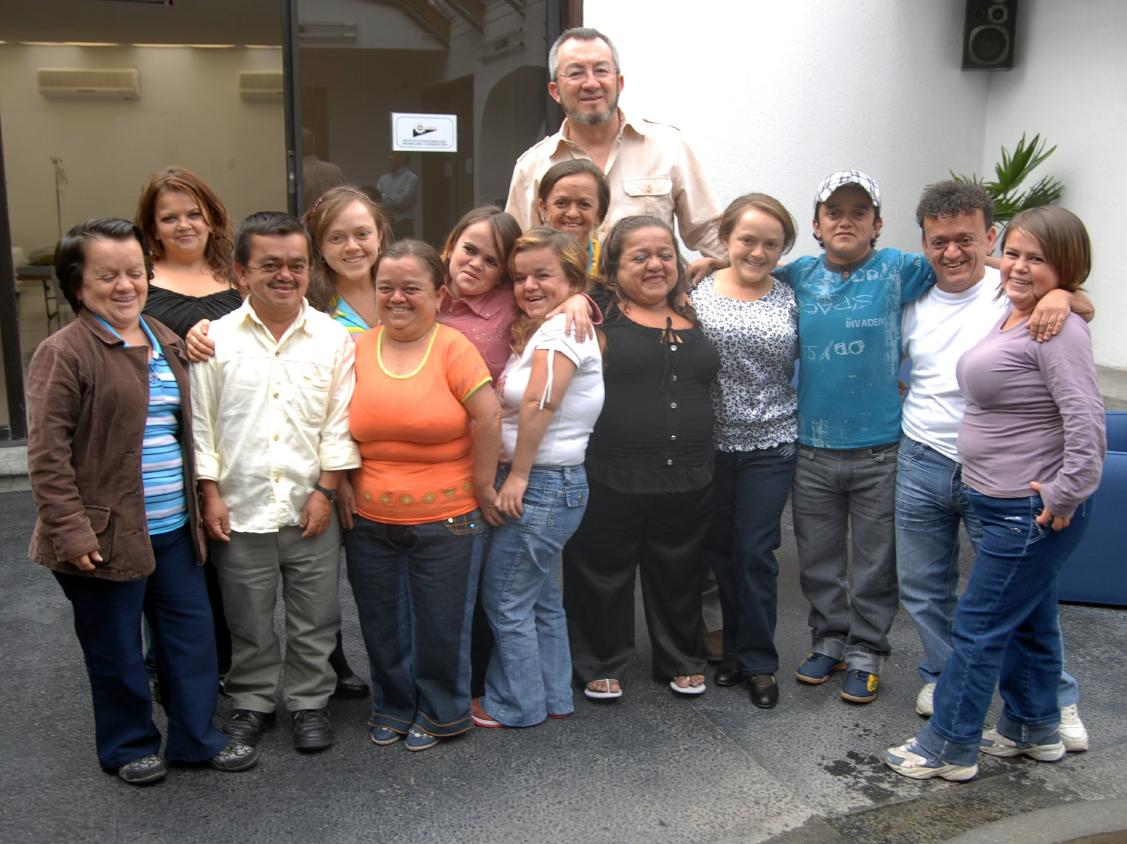 February 17, 2011; Click on the first photo for more details from the New York Times
[2].
February 17, 2011; Click on the first photo for more details from the New York Times
[2].
Refs.:
1. Aging: "Growth Hormone Receptor Deficiency Is Associated with a Major
Reduction in Pro-Aging Signaling, Cancer, and Diabetes in Humans"
by
Jaime Guevara-Aguirre [1], Priya Balasubramanian [3], Marco Guevara-Aguirre [1],
Min Wei , Federica Madia [3], Chia-Wei Cheng , David Hwang [4], Alejandro Martin-Montalvo
[5, 6], Jannette Saavedra [1], Sue Ingles [7], Rafael de Cabo [5], Pinchas Cohen [4]. and Valter
D. Longo [2 ,3]
+ Author Affiliations:
1. Institute of Endocrinology, Metabolism and Reproduction, Quito, Ecuador.
2. Department of Molecular and Computational Biology, University of Southern California, Los
Angeles, CA 90089; USA
3. Andrus Gerontology Center, University of Southern California, Los Angeles, CA 90089; USA
4. Division of Pediatric Endocrinology, David Geffen School of Medicine, University of
California, Los Angeles, CA 90095; USA
5. Laboratory of Experimental Gerontology, National Institute on Aging, Baltimore, MD 21224,
USA
6. Centro Andaluz de BiologĦa del Desarrollo, Universidad Pablo de Olavide Consejo Superior
de Investigaciones Cientificas and Centre for Biomedical Research on Rare Diseases, ISCIII, E-
41013 Sevilla, Spain
7. Division of Epidemiology, Keck School of Medicine, University of Southern California, Los
Angeles, CA 90089; USA
8. Norris Cancer Center, University of Southern California, Los Angeles, CA 90089; USA
To whom correspondence should be addressed. E-mail jguevara@iemyr-ecuador.org
(J.G.-A.); vlongo@usc.edu (V.D.L.).
Science Translational Medicine Vol. 3, No. 70, p. 7 (February 16, 2011); 0ra13; DOI:
10.1126/scitranslmed.3001845
Mutations in growth signaling pathways extend lifespan, as well as protect against age- dependent DNA damage in yeast and decrease insulin resistance and cancer in mice. To test their effect in humans, we monitored for 22 years Ecuadorian individuals who carry mutations in the growth hormone receptor (GHR) gene that lead to severe GHR and IGF-1 (Insulin-Like Growth Factor 1) deficiencies. We combined this information with surveys to identify the cause and age of death for individuals in this community who died before this period. The individuals with GHR deficiency exhibited only one nonlethal malignancy and no cases of diabetes, in contrast to a prevalence of 17 percent for cancer and 5 percent for diabetes in control subjects. A possible explanation for the very low incidence of cancer was suggested by in vitro studies: Serum from subjects with GHR deficiency reduced DNA breaks but increased apoptosis in human mammary epithelial cells treated with Hydrogen Peroxide. Serum from GHR-deficient subjects also caused reduced expression of RAS, PKA (Protein Kinase A), and TOR (Target of Rapamycin) and up- regulation of SOD-2 (Superoxide Dismutase 2) in treated cells, changes that promote cellular protection and lifespan extension in model organisms. We also observed reduced insulin concentrations (1.4 u/ml versus 4.4 u/ml in unaffected relatives) and a very low HOMA-IR (homeostatic model assessment insulin resistance) index (0.34 versus 0.96 in unaffected relatives) in individuals with GHR deficiency, indicating higher insulin sensitivity, which could explain the absence of diabetes in these subjects. These results provide evidence for a role of evolutionarily conserved pathways in the control of aging and disease burden in humans.
2. Nicholas Wade, "Group of Ecuadorean Villagers, Small But Healthy, May Hold Secret to Longevity," The New York Times pp. A1,6 (February 17, 2011)

February 15, 2011; Click on the photo for more details.
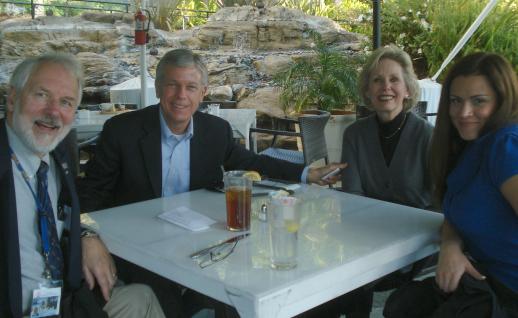
January 26, 2011, 3:00 PM at the "W" Hotel in Westwood, CA. Dr. Stephen Coles, Dr. Stephen
Franklin, Elaine Franklin, and Natalie Coles discuss SRF business.

Friday, January 21, 2011; 3:30 PM: Prof. Albert J. R. Heck, Ph.D., of Utrech University in the
Netherlands a.j.r.heck@uu.nl lectured at UCLA's
Department of Chemistry and Biochemistry on "Bridging Native Mass Spectrometry and
Molecular Systems Biology" with the aim of learning the Structure, Function, and Post
Translational Modification of unknown proteins along with their primary, secondary, tertiary,
and quaternary structure (including associations with both short segments of RNA and even
DNA molecules that alter the conformation of their final shape and active binding sites). Even
in a simple bacterium like a cyanobacterium that employs sunlight with photosynthesis to
synthesize structural proteins is filled with proteins whose function is largely unknown. Indeed,
60 percent of the proteins in cyanobacteria have unknown functions. For example, the proteins
that are used in a clock-work mechanism to maintain diurnal (24 hour) oscillations are known,
but the signaling synchronization to the hours of sunlight are not known precisely. [1]. The
Lambda Phage Virus is the most common form of life on the planet, he said. Prof. John B. Fenn
[June 15, 1917 December 10, 2010] was mentioned as an analytical chemist who invented a lot
of the MS/MS technology. He shared of the Nobel Prize in Chemistry in 2002 [2] and died very
recently at the age of 93.
Refs.:
1. Michael J. Rust, Susah S. Golden, and Erin K. O'Shea, "Light Driven Changes in Energy
Metabolism Directly Entrain the Cyanobacterial Circadian Oscillator," Science, Vol.
331, No. 6014, pp. 220-223 (January 14, 2011).
2. Wikipedia Biography.
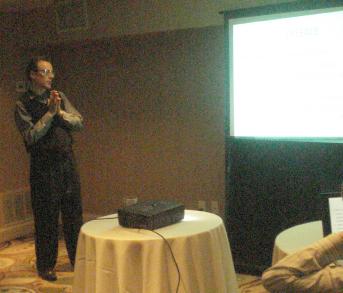
Tuesday, January 18, 2011; 8:30 PM; Prof. Michael Rose of UC Irvine lectured in Orange
Country at the Hyatt Regency Hotel in Newport Beach on the advantages of the Paleolithic
Diet. Although our human species has been well adapted to agriculture for the last 10,000
years (500 generations), our ancestral cavemen lived here for at least 200,000 years with a
radically different diet; thus, the evolutionary adaptation away from a hunter/gatherer nutritional
lifestyle (fish, meat, fruit, nuts, and honey) toward an agricultural lifestyle (grains, dairy products,
and sugar) is much less strong for those humans who survive past the age 50, and Dr. Rose's
hypothesis is that older people are not genetically adapted to carbohydrates the way children are.
Click for more details.
He also has suggested that after a certain age (like 90) mortality rates may plateau. This is not to say that mortality rates will become negligible (as accidents, suicides, homicides, wars, and so forth will always be with us) but that the rate of intrinsic aging (at the molecular level) may slow considerably.
Unfortunately, the US CDC, which compiles statistical data by (1) geographical region, (2) race, (3) gender, and (4) chronological age for our government, doesn't factor out the extrinsic causes of death (like getting hit by a truck while crossing the street), because they aggregate their statistics as good epidemiologists would, for the population as a whole. Death certificates and autopsy reports do distinguish traumatic injury from cellular age-related chronic pathology, but this is not subjected to careful analysis by life-insurance actuaries for persons over the age of 90 on a disease-by-disease basis (they tend to be concerned with other simple biomarkers of premature death like smoking, obesity, and hypertension, which are easy to measure). All we can be confident about is that age-related diseases generally increase exponentially with age as our human genome devotes decreasingly less effort to repair of cells once we have passed the age of maximum fertility and have completed our phenotypic growth cycle during the course of our life history called adolescence. This could be secondary to the loss functional adult stem cells. But much more data for centenarians needs to analyzed for mitochondrial function, telomere length, immune function, misfolded proteins that cannot be recycled, misrepaired double-strand DNA breaks (in our 46 chromosomes), as well as adult stem-cell dysfunction. Stem cells may no longer be able to come-to-the-rescue once challenged by cellular injury, since the Extra Cellular Matrix (ECM) itself has also aged linearly, relentlessly with time and may no longer be capable of providing the appropriate signaling. Stem cells may be less capable of promoting healing due to molecular injury secondary to free-radical (oxidative) damage, collagen cross-linking, and the loss of membrane fluidity due to the glycation of lipids (AGE's). An accelerated form of chemical cross-linking occurs when an animal hide is deliberately converted to leather by a process called tanning. This tanning process is happening to all of us (at a slower rate) as we age, not only to our outer skin but to all of our internal organs at the same time.
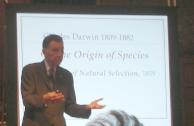
Sunday, January 16, 2011; [12:45 - 2:00] PM; Prof. Francisco J. Ayala, Ph.D. of the
Department of Biology atf UC Irvine lectured in the Westwood Presbyterian Church on the
fallacy of Intelligence Design. Born in Spain, he was once a Catholic Priest. Now an
internationally-recognized molecular biologist, recipient of the 2010 Templeton Prize, and
member of the National Academy of Sciences, he holds the Donald Bren Chair of Biological
Sciences, Ecology, and Evolutionary Biology and is a Professor of Logic and Philosophy at UC
Irvine. Two of his books include Am I a Monkey?: Six Big Questions about Evolution,
(Johns Hopkins University Press, Baltimore, MD; 2010) and Darwin's Gift to Science and
Religion (Joseph Henry Press; 2007).
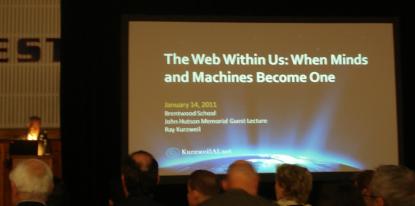
Friday, January 14, 2011; [7:00 - 8:30] PM; Inventor/author/futurist Ray Kurzweil delivered
the John Hutson Memorial Guest Lecture at the Brentwood School in West Los Angeles, CA.
He announced that his new book will be entitled, How the Mind Works and How To Build
One. More interestingly, he stated that the new date for the achievement of "Longevity
Escape Velocity" will be the year 2025 (15 years from now). Obviously, we need a "Bridge
Plan" to ensure that we're still here by the time Escape Velocity finally gets here; it would be a
shame if we were amongst the last generation to die prematurely.
Click for News Items from 2010.